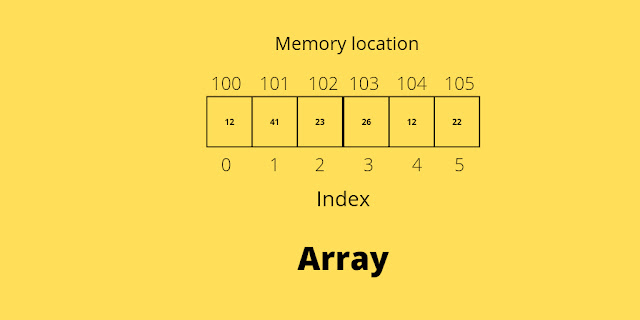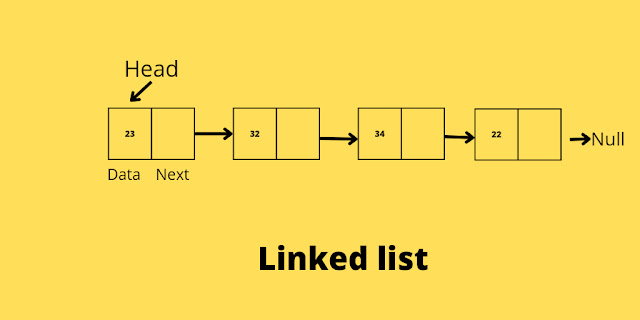classification of data structure
"In this article we are going to see about different classifications of data structure and also going to see about their types."
Data structure
What is data structure ? Data structure can be known as the group of data elements which gives an efficient approach for organising and storing the data in a logical or mathematical way in a computer system.
The data strucures are used widely in almost every field of computer science i.e in Artificial Intelligence (AI), Operating System, graphics, and much more. Few examples of Data Structure can be Arrays, Linked Lists, Queue, Stack, etc.
It helps in the handling of the data in an efficient way resulting in increase in the performance of the software or the program, as the main function of software is to retrieve and store the data of the user as fast as possible.
classification of Data Structure
Data Structures have various types of uses in our daily life. On using these Data structures you can process and can organise a very large amount of data . There are various types of data structures which are used to solve various logical and mathematical problems.
1) Linear data structure :
It is a type of a data structure where all the elements are arranged in the sequential or linear form, in which each each element is attached to another element in linear form.
The linear data structure is further classified into two types as :
a) Static Data Structure:
In the static data structure the size of the memory is fixed, we can't increase or decrease the size of the memory. It is easier to access the elements in static data structure.
Example for static data structure is array.
Array:
- An array is a linear data structure and it is the collection of similar type of elements or data.
- all the elements of the array takes contiguous memory allocation.
- The size of the memory is fixed. You can't increase or decrease the size of array.
- It is a homogenous collection of elements.
- An array can also handle complex data structures by storing the elements in two- dimensional array.
Applications of array:
- An array can be used for the scheduling of CPU.
- It can also be used for solving the matrix problems.
- It is also used in implementing other data structures like Stacks, Heaps, Queue, etc.
- The records oof the databases are also implemented using array.
- The arrays can also be used for speech processing, where every speech signal is an array.
b) Dynamic Data Structure:
In the dynamic data structure the size of the memory is not fixed, The size of can be increased and decreased during run time which can be considered efficient for the complexity of the code.
Examples for dynamic data structure are linked list, stack , queue, etc.
Linked List :
- A linked list is a type of linear data structure, in which the elements does not allocate contiguous memory allocation.
- Here the elements are linked using the pointers.
- The first node of the linked list can be known as root or head.
- The last node next always contain null.
- In the linked list the deletion and insertion is possible easily.
- Every node of the linked list contains the the address of the next node.
There are four types of Linked List :
- Singly- linked list
- Doubly linked list
- Circular linked list
- Doubly circular linked list
Stack :
- Stack is an example of linear data structure which follows the particular order in which the operations are performed.
- The order of the Stack is LIFO (Last In First Out).
- The entering or retrieving of data is known as the push and pop operation in a stack.
- The insertion and deletion is done at one end i.e from the top of stack.
- Stack is implemented through array or linked list.
Queue :
- Queue is an example of linear data structure which follows a particular order in which the operations are performed.
- The order of the Queue is FIFO ( First In First Out).
- In Queue few basic operations done are dequeue, enqueue, front, rear, etc.
- If you want to remove the last element of the queue, then all the elements inserted before the new element should be removed.
- It is an ordered list of elements containing similar datatypes.
2) Non - Linear Data Structure :
It is a type of a data structure where all the elements are not arranged in sequential or linear form. Here we can't traverse all the elements in single run.
Examples for non-linear data structure are:
Tree:
- A tree is a non-linear and hierarchal data that is arranged in a structure that looks like a tree.
- In tree structure the topmost node is known as root node.
- The Tree consists of various terminologies like node, edge, height of tree, edge, etc.
- Every node of tree contains some data that can be of any type.
- It consists of three nodes namely structural nodes, central nodes and sub- nodes, and are connected via edges.
- It is also known as a recurcive data structure.
Graph :
- A graph can be known as a non- linear data structure which consists of nodes and edges.
- The graph data structure is used for solving the most complex and challenging problems.
- The graph contains of terminologies namely, path, degree, connected components, etc.
- The maximum distance from all vertices is known as eccentricity of that vertex.
- The vertex which has the minimum eccentricity is known as the central point of the graph.









2 Comments
Ek number bhai
ReplyDeleteSuper bhai
ReplyDelete